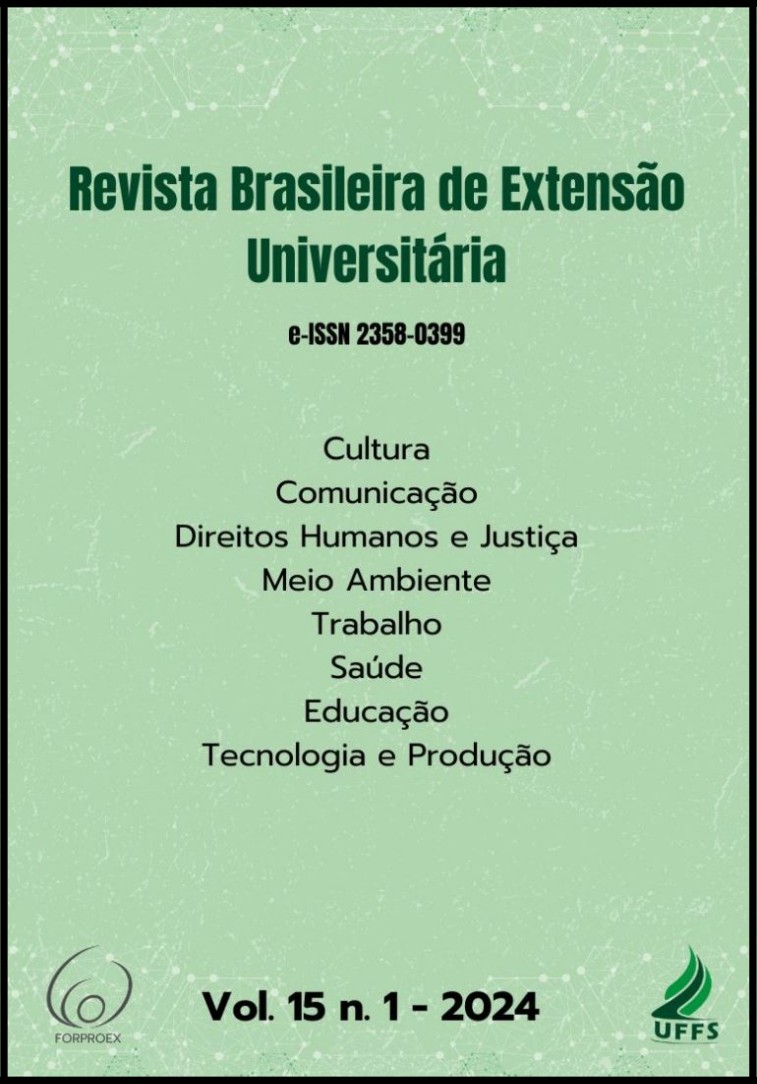Improving computer access for individuals with upper limb deficiency through extensionist actions
DOI:
https://doi.org/10.29327/2303474.15.1-7Palavras-chave:
Tecnologia Assistiva, Impressão 3D, Tetraplegia, Design Inclusivo, Periférico De ComputadorResumo
Despite continuous efforts to promote accessibility, a pressing need remains for increased focus on digital access, particularly for individuals with upper limb mobility limitations, to ensure full integration into computer usage. In response to this challenge, the university extension project Assistive and Adaptive Peripherals (ASAP) was established to leverage 3D printing technology to enhance digital accessibility. This research aimed to construct a conceptual prototype for an assistive mouse and keyboard using readily available and accessible materials, emphasizing the potential for widespread replication. Beyond this immediate goal, the secondary objective was to initiate the extension of the project, focusing on the development of assistive computer peripherals to foster social inclusion. Volunteer participation, including interviews with individuals with limb impairments such as tetraplegia, during the testing phase added a valuable human-centered design (HCD) perspective to the study. This approach ensured that the end-users' needs and preferences were at the core of the design process, making the resulting products more practical and user-friendly. Additionally, a thorough literature review on digital accessibility products was conducted. Through these methodological stages, the research yielded valuable insights, identifying theoretical and technological factors crucial for future applications of the ASAP project. This includes refining the research methodology and advancing the maturity levels of future devices. Looking ahead, the ASAP project will continue its extension activities by developing new assistive peripherals based on the findings of this study.
Keywords: Assistive Technology; 3D Printing; Tetraplegia; Inclusive Design; Computer Peripheral
Melhorando o acesso ao computador para indivíduos com deficiência de membro superior através de ações extensionistas
Resumo: Apesar dos esforços contínuos para promover a acessibilidade, ainda existe a necessidade de maior foco no acesso digital, especialmente para indivíduos com limitações de mobilidade nos membros superiores, a fim de garantir a integração total na utilização do computador. Em resposta a este desafio, foi criado o projeto de extensão universitária Assistive and Adaptive Peripherals (ASAP), com o objetivo de utilizar a tecnologia de impressão 3D para melhorar a acessibilidade digital. Esta pesquisa teve como objetivo construir um protótipo conceitual para mouse e teclado assistencial utilizando materiais prontamente disponíveis e acessíveis, enfatizando o potencial de replicação generalizada. Para além deste objetivo imediato, o objetivo secundário é iniciar o projeto de extensão ASAP, centrando-se no desenvolvimento de periféricos informáticos auxiliares para promover a inclusão social. A participação de voluntários, incluindo entrevistas com indivíduos com deficiências nos membros superiores, como tetraplegia, durante a fase de testes adicionou uma valiosa perspectiva de design centrado no ser humano (HCD) ao estudo. A metodologia foi enraizada no HCD, colocando o usuário final no centro do processo de design para o desenvolvimento de produtos e serviços de saúde. Além disso, foi realizada uma revisão da literatura sobre produtos de acessibilidade digital. Através destas etapas, a pesquisa rendeu insights valiosos, identificando fatores teóricos e tecnológicos cruciais para futuras aplicações do projeto ASAP. Olhando para o futuro, o projeto ASAP continuará as suas atividades de extensão através do desenvolvimento de novos periféricos de assistência com base nas conclusões deste estudo.
Palavras-chave: Tecnologia Assistiva; Impressão 3D; Tetraplegia; Design Inclusivo; Periférico De Computador
Downloads
Downloads
Publicado
Edição
Seção
Licença
Autores que publicam nesta revista concordam com os seguintes termos:
- Autores mantém os direitos autorais e concedem à revista o direito de primeira publicação, com o trabalho simultaneamente licenciado sob a Creative Commons Attribution 4.0 que permite o compartilhamento do trabalho com reconhecimento da autoria e publicação inicial nesta revista.
- Autores têm autorização para assumir contratos adicionais separadamente, para distribuição não-exclusiva da versão do trabalho publicada nesta revista (ex.: publicar em repositório institucional ou como capítulo de livro), com reconhecimento de autoria e publicação inicial nesta revista
- Autores têm permissão de distribuir seu trabalho online (ex.: em repositórios institucionais ou na sua página pessoal) a qualquer ponto antes ou durante o processo editorial, já que isso pode gerar alterações produtivas, bem como aumentar o impacto e a citação do trabalho publicado (Veja O Efeito do Acesso Livre).




